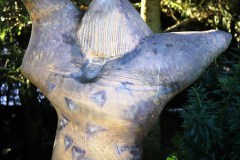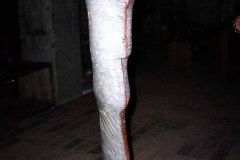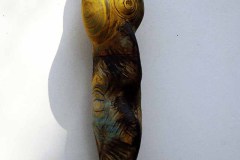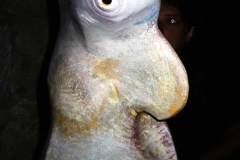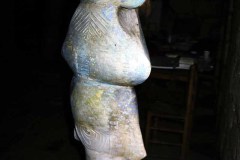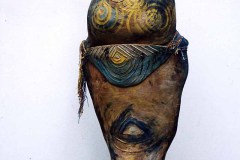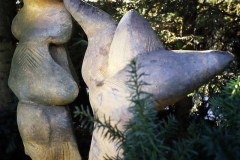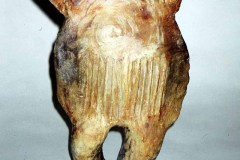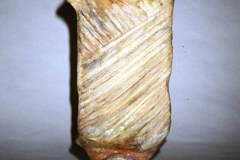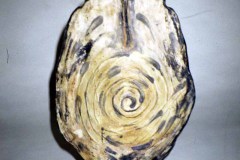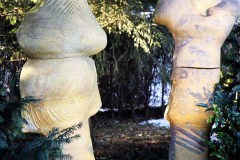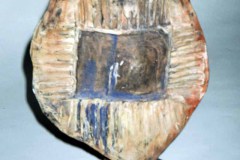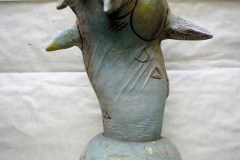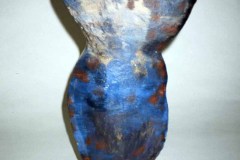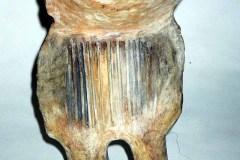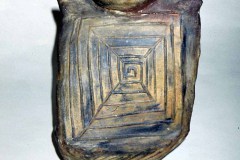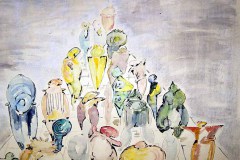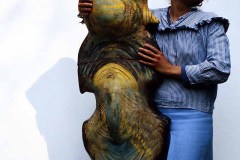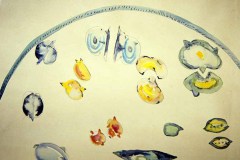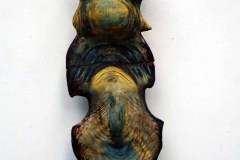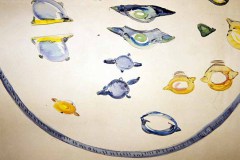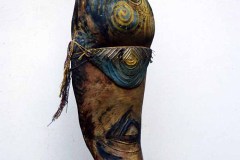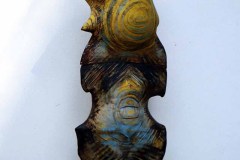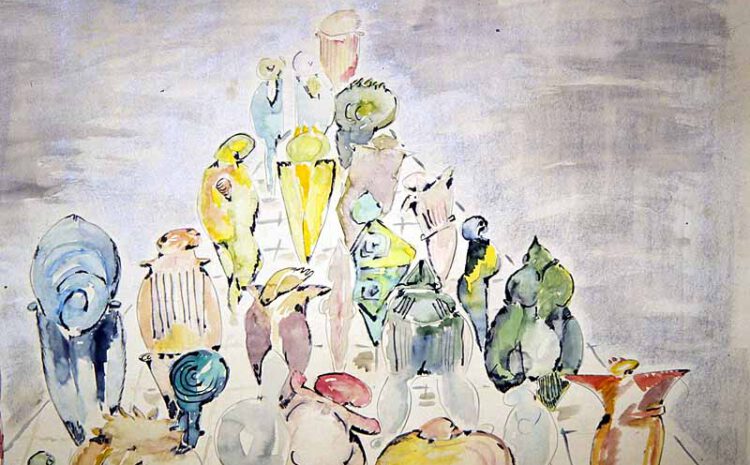
CLAY WEDGES
A group of life-size painted terracotta sculptures, installed on a circular surface. His works were created in Vienna and St. Margarethen during his studies.
Maria Biljan-Bilger:
I was delighted to accept Nele Ströbel into the ceramics class in Vienna. Her drawings shown were of impulsive power and life of their own in form and color. As she continued her studies, Nele used the disciplines for ceramics practiced in my class to build large space forms and intensify their expressiveness through clay colorations with oxides and engobing. Her passionate involvement in the work led her to large moving forms and at the same time to the use of color on the object to lively increased expressive power. Later, out of mutual affection that became friendship and did not break off the encounter , I could follow their new development.
Maria Biljan-Bilger
Friedrich Kurrent:
Nele Ströbel sees herself as a sculptor, in the plastic field she works with a variety of materials, mainly with fired clay, iron, wood and their combinations, in the area of large format colored drawings, here she also works with graphite, spray and sand. She has still learned the traditional, artisanal disciplines, but also uses new methods of production and expression that she sees as adequate to our time.
Years of study in Vienna, at the University of Applied Arts, at the “Stuben ring”, first in the ceramics master class with Maria Biljan-Bilger, then in the master class for sculpture with Wander Bertoni, confronted her with strong artistic personalities and the hothouse climate of fine art of a Vienna of the early 80s.
Returning to Munich, she has built up her own studio with great personal commitment in the “Au”, one of the last districts of old Munich.
In the current Munich art scene, the irritations are manifold. Young artists are being battered from a variety of sides: Art markets, art fairs, documentas act from the outside. Since and after Beuys, levels of consciousness have been torn open that seem to prohibit a carefree working without restraint. Warhol’s large-scale series still push into the field of vision . Serra brings tons in tension that a beginner can’t afford. Not everyone can, like Christo, pack whole city parts, lease whole landscapes. The positions of the strongest protago nists are thus virtually standing around individually. The catch-up process of late 20s, 30s, even 40s and soon 50s art is producing strange blossoms.
Nele Ströbel, touched by all this, pursues her visual goals with verve. Even her Viennese diploma thesis “Industriell-Manuell “, a juxtaposition of large-format insulator parts from the electrical industry with her self-made plastic-colored creations, had a space-grabbing effect. Since then, deformations , displacements, distorted perspectives, rows and sequences of movements have played an increasingly important role in her work. Above all, however, it is spatial situations that she approaches more and more.
Here is a point to which an architect might have something to say. The connection between work and space, the need of many visual artists to “penetrate” into the urban space, to shape the surrounding landscape, has grown. The reference to architecture as spatial art is striking as a general tendency. New means of expression and unfamiliar sculptural materials expand the possibility of the field of fine art in connection with architecture.
The questions will therefore be: what kind of context is possible today? (Postmodern architecture has also failed to connect with contemporary visual art, or better: has certainly failed to do so). Are art products “needed” at all in urban space, in the architectural environment?
Does our society see in pictorial-spatial works an indispensable necessity of life and an enrichment of the sensual-spiritual world?
Can the visual arts reach out to the general public in this way, or must they continue to “wait” in museum spaces, art markets, and galleries?
Does today’s understanding of architecture allow for togetherness? Do you need each other?
Is the past unity of architecture, sculpture, painting-however the subfields may be named-to be achieved once again, once more, or for the last time in the near future?
I am skeptical.
But Nele Ströbel tries it in active work.
Friedrich Kurrent


